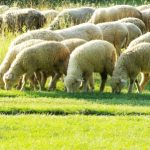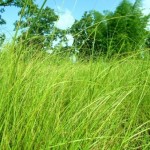A world without lawnmowers is a thing of the not too distant past. Edwin Beard Budding invented the first

Thank you for reading this post, don't forget to subscribe!
Scythes were the tool of choice for cutting grass, introduced into Europe in the middle ages they were used to cut grass on common land that was not used for grazing, and remained the tool of choice well into the 1800’s. As a lot of common land and farm land was used for grazing livestock, the need for mechanical grass cutting systems was non-existent, but there was a need for harvesting hay. The scythe is the ideal tool for harvesting tall grasses, as it makes a clean cut at the base of the blade and the action of scything creates a neat pile of grass at the side of a swathe, making it easy to gather into bales. Teams of scythers would start from one side of the field and work their way across, creating neat lines of cut grass, and when this skill was not required during haymaking season there was work for scythers from the 1700’s, maintaining the formal lawns of large estates.

If the lawnmower, as we know it, ceased to exist, along with line strimmers and other lawn care machinery, we would probably return to using scythes on private gardens, and livestock on council or common land, akin to the common grazing practices of agricultural workers and smallholders in times gone by. There is still a misconception that all common land has common rights attached to it, but since the Commons Registrations Act of 1965, it seems that only 35% of common land in England has registered rights, meaning that councils and landowners would be responsible for alternative methods of grass control. Livestock would be a good option for land that is not used primarily for recreation, as the use of animals can lead to an over-fertilisation of the ground, to put it euphemistically. Once again we could see teams of scythers managing grass growth in parks and playing fields, instead of the riding lawnmowers that have taken their place.
